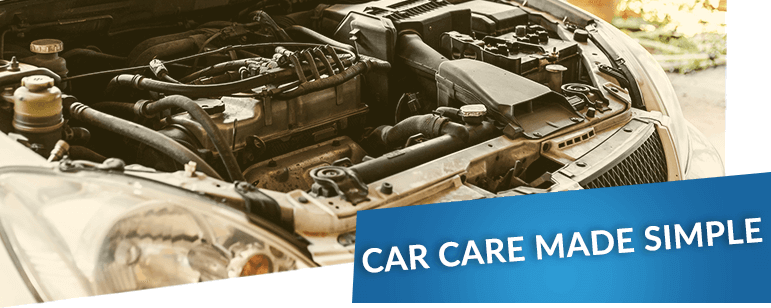If you’ve ever found yourself standing at the pumps wondering how you’ve managed to fill your diesel car up with petrol, you’re not alone.
Putting the wrong fuel in your car - or ‘misfuelling’ - happens way more often than you might think.
Luckily, this mistake can be rectified - depending on the circumstances.
Read on and find out what you can do if you ever put petrol in a diesel car and vice versa, and what misfuelling can do to your car.
Page Contents
- What Happens If You Put Petrol in a Diesel Car?
- What Happens If You Put Diesel in a Petrol Car?
- How Far Can You Drive with Petrol in a Diesel Car?
- How Far Can You Drive with Diesel in a Petrol Car?
- What Can I Do If I Misfuel My Car?
- What If I’ve Started The Engine?
- How Long Does It Take to Drain the Wrong Fuel?
- What About E10 Fuel?
- What About AdBlue?
- Have I Put The Wrong Fuel In My Car?
- How Can I Avoid Misfuelling in the Future?
- FAQs
What Happens If You Put Petrol in a Diesel Car?
When petrol enters a diesel engine, this can cause serious mechanical issues as the petrol can create friction between various components.
This can damage parts like the fuel lines and pump.
You should have your vehicle towed to a garage so that it can be looked at by a professional mechanic if you have misfuelled your car and attempted to drive off.
You will likely realise your mistake when your vehicle begins to struggle as you drive.
In the event you have driven off with only a small amount of petrol in your diesel car, then you may not be aware of any change in your vehicle’s performance.
However, we would strongly advise that you have your car’s fuel system drained by a skilled mechanic - and have the fuel filter changed.
Some breakdown companies, including the RAC, may offer to do this for you at the roadside.
The fuel tank can then be refilled, and air can be removed from the fuel system - this air could stop the engine from running effectively.
Diesel vehicles use fuel as a lubrication oil, which is designed to prevent wear and tear and keep the components running smoothly.
As petrol is a solvent, it can cause real damage to the diesel pump components and crucially the engine - even if only a small amount has been used.
Common rail (or HDi) diesel engines are most likely to be seriously damaged by the wrong fuel.
Your car could need new fuel pumps, pipes, filters, injectors and a new fuel tank.
You may even need a new engine - which could be an expensive replacement.
What Happens If You Put Diesel in a Petrol Car?
When you put diesel in a petrol car and then start your engine, the diesel will clog your spark plugs and the fuel system, causing the engine to misfire.
You may notice that your engine is smoking, keeps cutting out, or fails to start.
Whilst accidentally adding a small amount of diesel to a petrol car is less serious than the other way around, you should still have the fuel system drained as soon as possible.
How Far Can You Drive with Petrol in a Diesel Car?
The minute you start the engine with petrol in your diesel car, you will cause damage to your engine and other vital components.
If you've put petrol in a diesel car by mistake and driven it, it won't be possible drive for very long at all.
Even if you manage not to cause excessive engine damage, draining and flushing the fuel lines and engine will still be expensive.
How Far Can You Drive with Diesel in a Petrol Car?
As the diesel will cost the spark plugs and fuel system, your engine can misfire or may not start at all if you put diesel in a petrol car.
If you are able to drive at all, you will likely only be able to travel a few miles on diesel before the engine shuts down.
You should have your car towed to a nearby garage so that the fuel system can be drained if you realise you've put diesel in your petrol car.
What Can I Do If I Misfuel My Car?
So, you’ve accidentally misfuelled your car - not to worry!
If you are still at the filling station, do not turn the key any further than necessary for the steering wheel to unlock.
Doing so will only cause the fuel pump to send the wrong or contaminated fuel into the engine.
Instead, ask someone to help you push your car out of the way of the pumps to a safe space - consider alerting the staff at the petrol station so that they can assist you.
You can call your breakdown provider if you have breakdown cover, and they may even be able to fix the problem for you at the site of the misfuelling incident.
We would advise that you make your insurance provider aware of what has happened too, as this could make any repair claims easier to make in future.
What If I’ve Started The Engine?
In the event that you have started your engine and driven off, then you could be in for a more costly repair.
This is due to the fact that the wrong fuel will now be deep in the car’s engine and fuel system, as opposed to just being in the tank.
How Long Does It Take to Drain the Wrong Fuel?
Draining the wrong fuel from your car can take anywhere from a few mintues to a few hours.
This depends on how much fuel has been added to the tank and how easy the tank is to access.
The wrong fuel is drained out when an extraction hose is connected to a drain plug.
As most modern vehicles have sealed tanks, it can be harder to access and drain the wrong fuel, making the process take longer to complete.
What About E10 Fuel?
As of September 2021, E10 fuel became the standard form of unleaded petrol in the UK. E10 fuel is a greener biofuel, containing 90% regular unleaded fuel and 10% ethanol.
Whilst E10 fuel has brought us a little closer to carbon-neutrality, some cars are not compatible with E10.
When you put E10 fuel into an incompatible car, the car may still run, but the bioethanol will do damage to the plastics, metals and seals - corroding them over time.
If you fill up an older car with E10 fuel, make sure you fill up with a compatible fuel as soon as possible so that you can limit the amount of E10 fuel in your car’s system.
What About AdBlue?
If you have accidentally put AdBlue into your fuel tank, do not turn on the ignition or start the engine - you could be faced with a costly repair if you do so.
Call your breakdown provider to assist you.
AdBlue can do damage to your fuel tank, pump and injection system.
As AdBlue is corrosive, this is one issue which cannot be fixed at the roadside.
Your car will need to be towed to a garage to have the issue resolved.
In the event you have put fuel into your AdBlue tank, you should also avoid turning on the ignition or starting the engine.
If you do so, then the entire Selective Catalytic Reduction and AdBlue injection system may need to be replaced.
You should once again call your breakdown provider, who will be able to assist you further.
Have I Put The Wrong Fuel In My Car?
If you are wondering whether you put petrol in your diesel car, then the following warning signs can be a good indication:
- A loud knocking noise when accelerating
- Acceleration is slower than normal
- Excessive smoke is leaving the exhaust
- The engine warning light is illuminated
- The engine has stopped
- Your car won’t restart
Conversely, if you think you might have put diesel in your petrol car, look out for the following warning signs:
- The engine is misfiring
- Excessive smoke is leaving the exhaust
- The engine keeps cutting out
- Your car won’t restart
Of the two, putting petrol in a diesel car can cause the most damage.
To limit the damage, make sure you leave your engine switched off, and keep your keys well away from the ignition.
How Can I Avoid Misfuelling in the Future?
Misfuelling is a fairly easy mistake to make.
Perhaps you have recently switched from a petrol to a diesel-fuelled car - you could reach for the petrol nozzle if this is something you are used to doing.
Filling up your diesel tank with petrol is more likely to occur, as forecourt diesel pump nozzles are generally wider than a petrol car’s filler neck.
For this reason, you would have to try pretty hard to fill up your petrol tank with diesel.
Going forwards, why not opt to place a sticker on the filler cover?
That way you will be reminded each time you go to top up your car as to which fuel your vehicle needs.
Take a second to read the pump’s trigger before filling up, and you could save yourself from a potentially costly repair.
FAQs
How Long Will It Take To Drain The Wrong Fuel?
How Much Petrol Can I Have Put In My Diesel Car?






